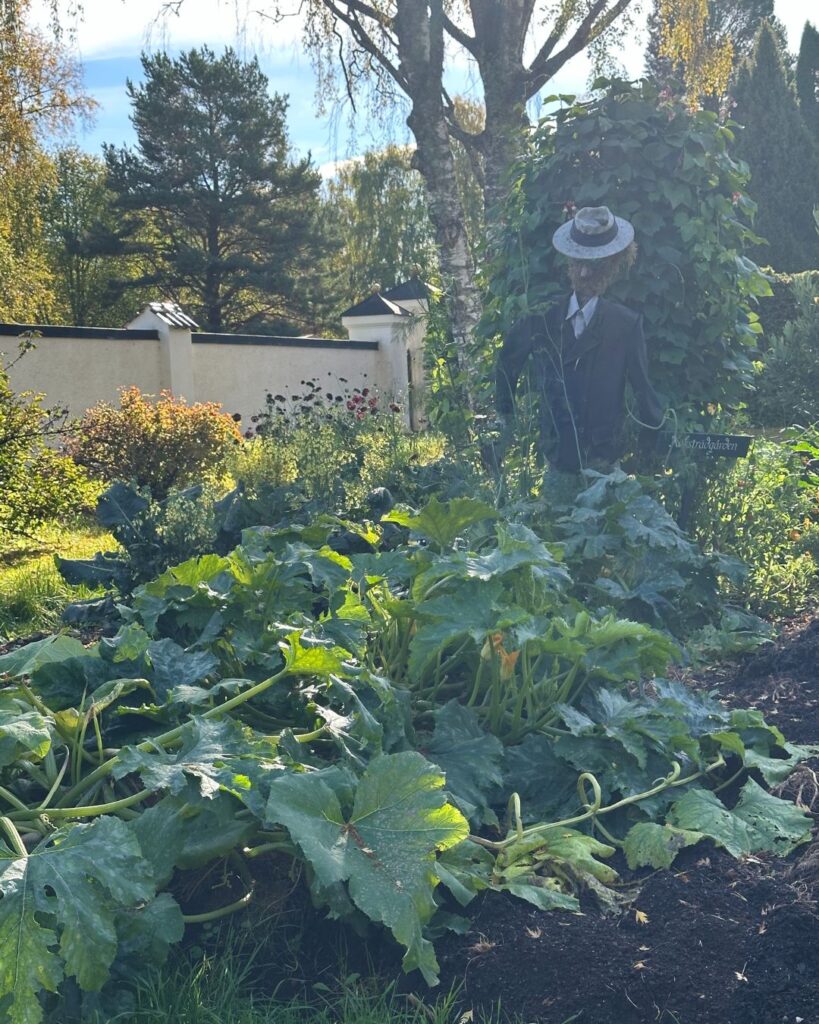The garden rooms
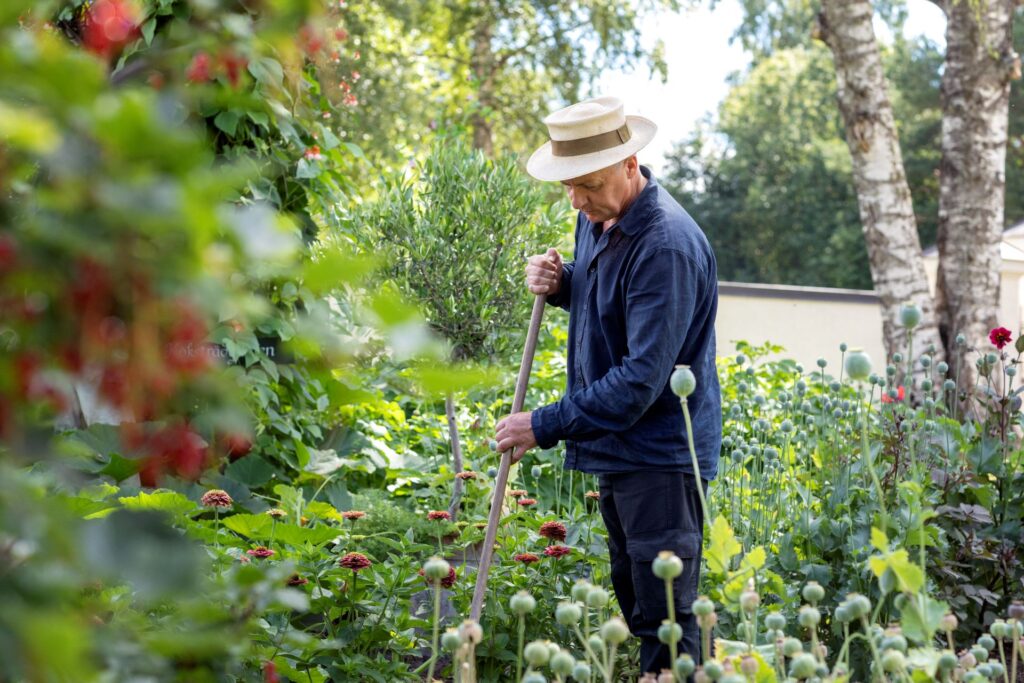
THE GARDEN ROOMS
Hildasholm's gardens were created by Hilda Munthe, who developed her interest in gardening as a child. Inspired by classical gardens in England, France and Italy, she began to create garden rooms around the house and out into the surrounding nature park.
The garden rooms are symmetrically designed but vary in style and planting. There are no exclusive species here, but traditional flowers such as haybeckia, sweet peony and delphinium - just like in gardens around the region.
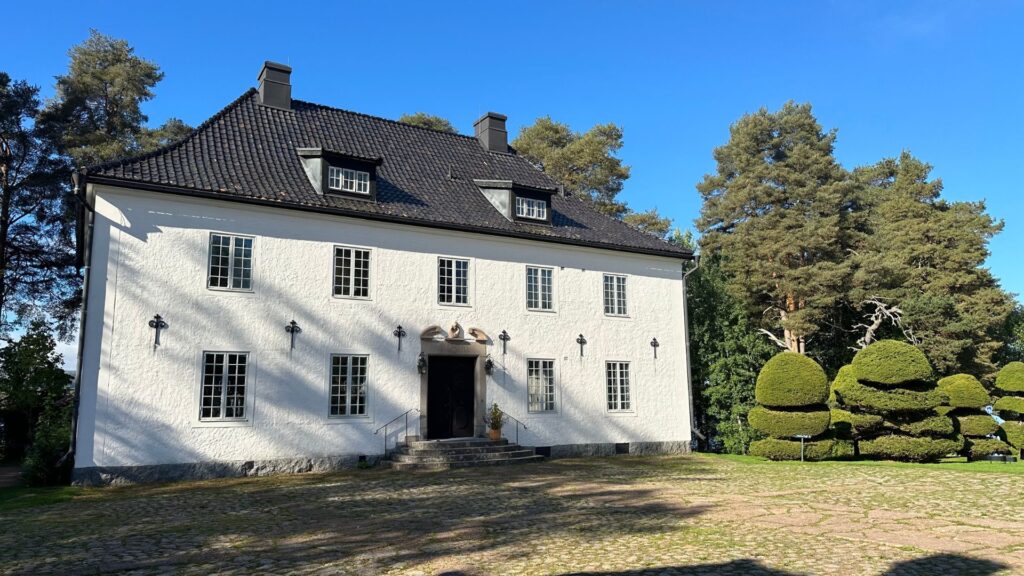
The courtyard
Hildasholm's original name, Stengården, refers to the cobbled courtyard - 'the Stone court'. Flat walkways made of limestone from the island make it easier to get from one side to the other.
In the lawn right next to Borggården are the peculiar shaped fir trees. Old photographs from the 1930s show that they were meticulously cut into many strictly symmetrical shapes: balls, cones, cylinders, spirals... However, as they have grown older, they have developed more and more of their own personality.
The peacock garden
In the Peacock Garden the original boxwood hedges were eventually replaced by hardier Spiraea japonica 'Little Princess', which frames daisies and violets.
The garden is named after of two 18th-century sculptures that Hilda Munthe brought here from her home country. Sometimes called the Yellow Garden, it only turns yellow in late summer, when the haystacks along the edges begin to flower.
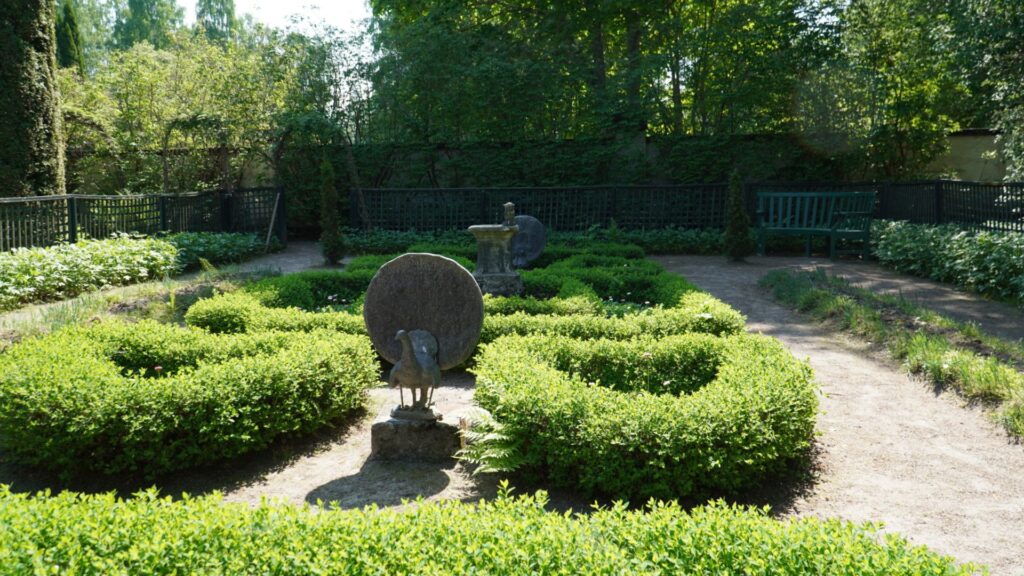
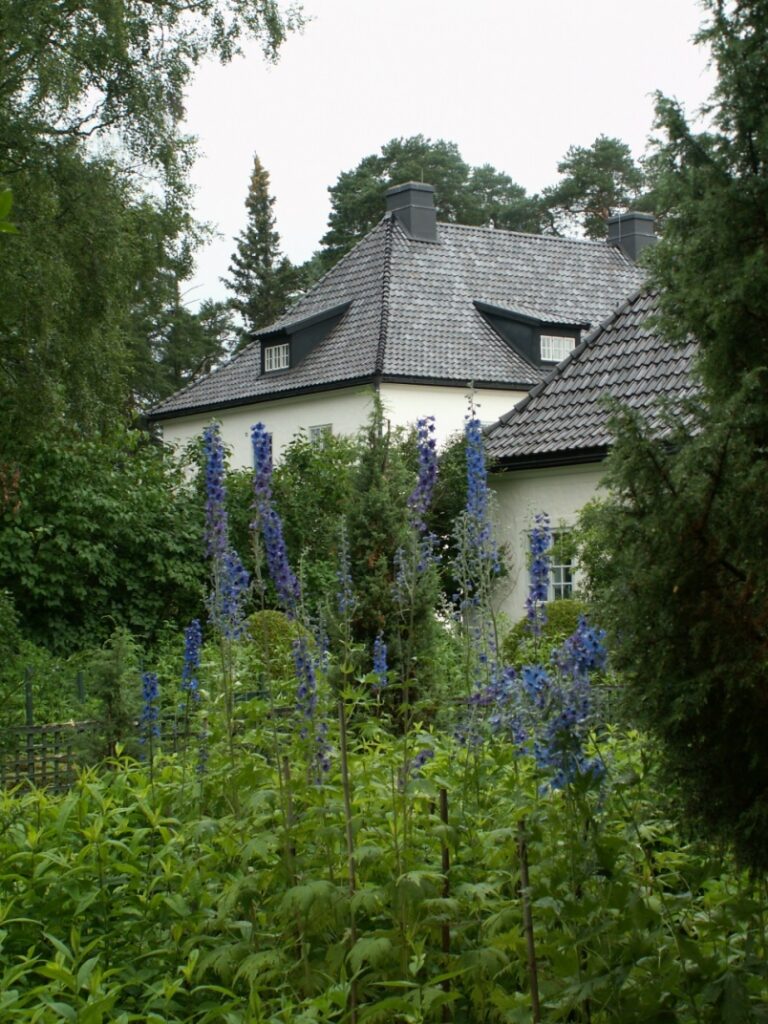
The juniper garden
Three large flower beds with tall perennials - Delphinium, autumn phlox, goldenrod, torchflowers - lined with columnar conifers dominate the labyrinthine Juniper Garden. Some of the original junipers remain. More recently, they have been joined by tulips, yews and a number of newly planted junipers. Oriental poppies, sweet peonies, starflower and digitalis are also to be found here, and the wall is lined with fan-shaped fruit trees.
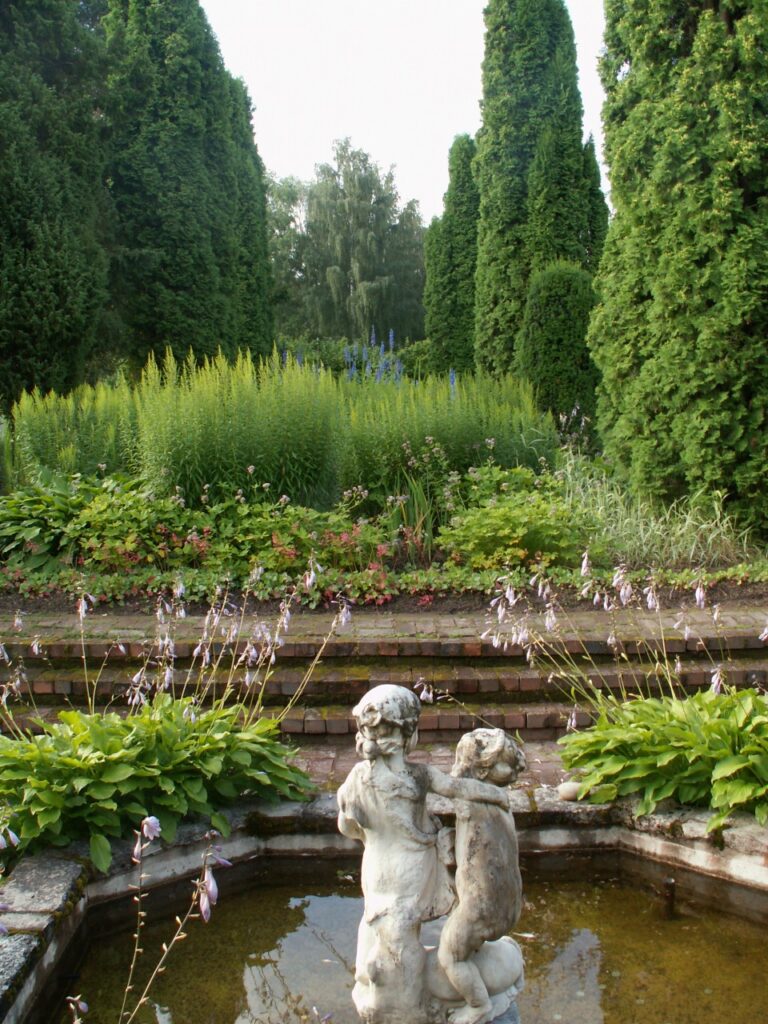
The leaf aisle
Deciduous lilacs leads from the courtyard to the small forged gate in the wall towards the cemetery. Originally there was a fairly large piece of arable land between Hildasholm and the cemetery, but today it has grown so much in size that it has crept right up to the wall.
Leksand cemetery was, according to Axel Munthe, the most beautiful in the world - 'the only cemetery that takes away the horror of death'. However, he himself wanted to be cremated after death and for his ashes to be scattered in the sea off the Pater Noster archipelago on the west coast.
The gate was used by the Munthe family when they went to church on Sundays. They were faithful churchgoers during their stays in Leksand and were always found in the same pew in church.
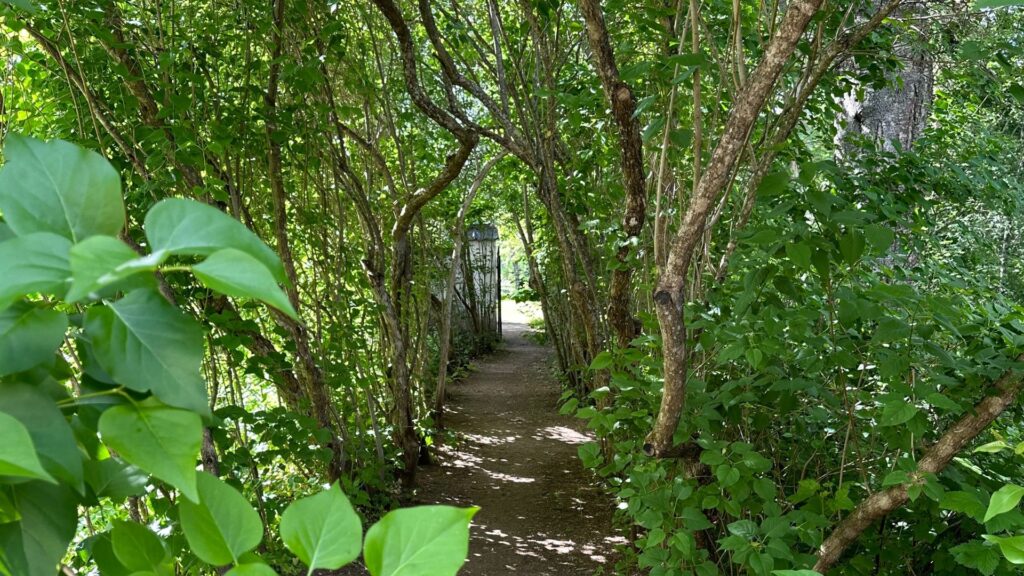
The sunken garden
Two large plantings of daylilies flanks the Sunken Garden; on one side Hemerocallis lilioasphodelus, yellow daylily, which flowers at midsummer, opposite Hemerocallis fulva, brown-red daylily, which has its flowering time later in the summer.
The ledges are made of soil bricks and in the centre of the garden there is a small pond bordered by funkia flowers. The sculpture in the pond depicts Diana, the goddess of the hunt, as a child.
Axel Munthe's most famous patient was perhaps the Queen of Sweden, Viktoria. Despite the rumours about their relationship, she was also good friends with Hilda Munthe. They corresponded for many years and the Queen was also godmother to both 'Peter' and Malcolm.
The heavy-growing rosehip shrub which stands in the corner of the spruce hedge next to the Sunken Garden, is a gift from Victoria to Hilda and the boys. It is said that the Queen dug it up with the tip of her umbrella when they visited Birka together on one occasion.
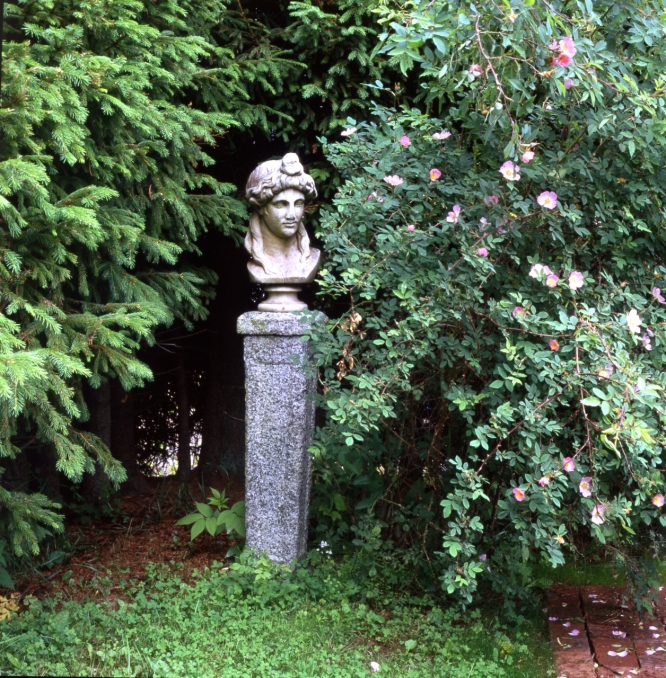
The gazebo
The gazebo is Hildasholm's southernmost outpost towards Österviken, a peaceful spot with evening sun and fine views towards the villages of Karlsarvet and Västanvik on the other side of the water.
If you pay attention you can see that on the natural stones in the ground next to the gazebo, names have been carved: Solomon, Owl, Vic, Tell, Gorm. It is the Munthe family's pets that have been given their final resting place here.
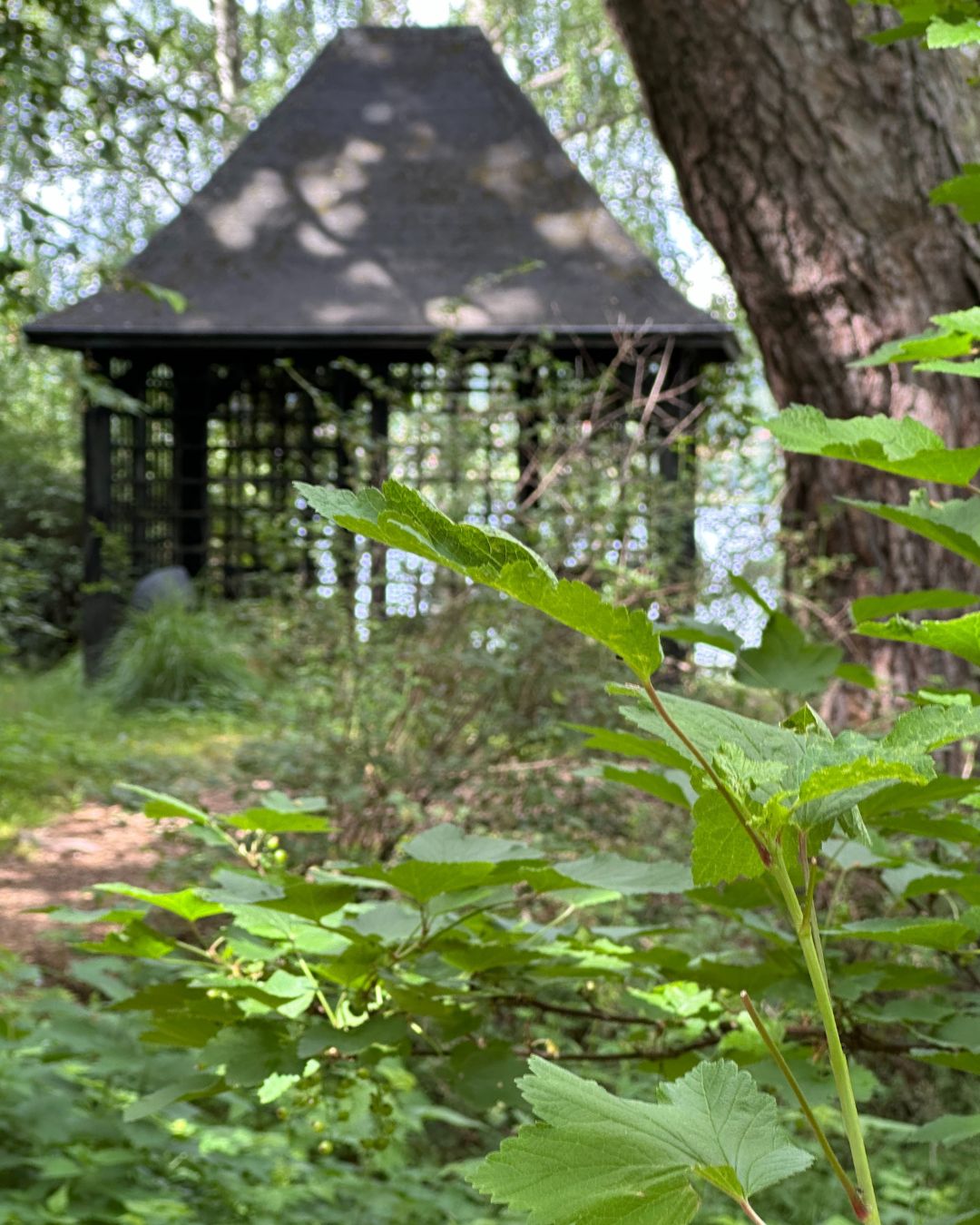
Munthes pit
In the ravine Between the Lusthuset and Hildasholm's main building, the small lead sculpture of an angel sits on its granite plinth under leafy arches. In the ground beneath the angel, small wild animals - birds, hedgehogs, squirrels... - are buried.
In the slopes Here, Hilda Munthe created the farm's own botanical garden with, among other things, several different orchid species taken from the forests around Leksand. Of these, only a single guckusko remains today.
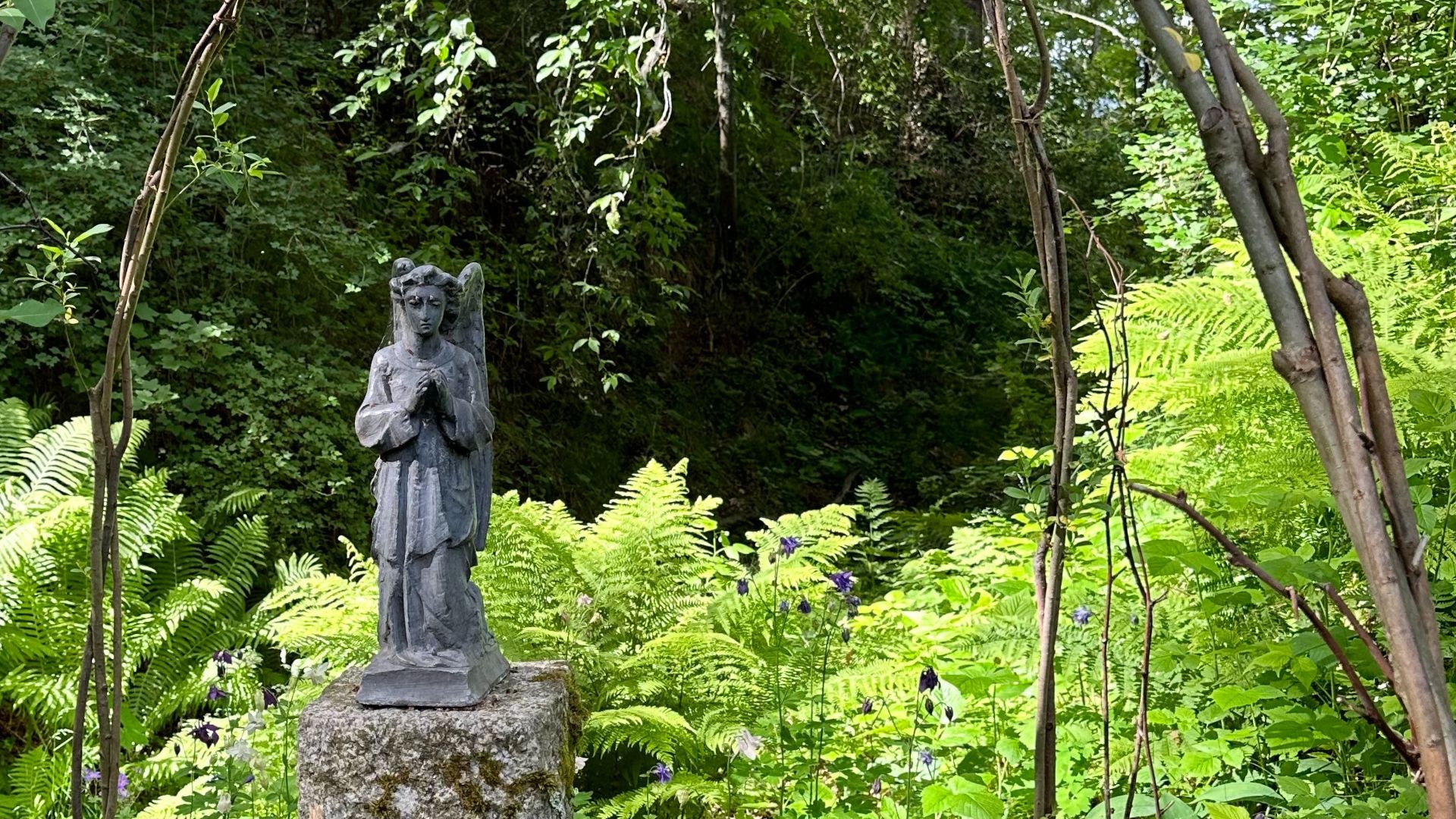
The rose garden
On the south gable of the main building you will find the small rose garden. Here, old-fashioned hardy shrub roses fight against the sometimes harsh winds from Siljan.
The roses are joined by scented peonies, clove, bluebells and lavender.
The little putto sculpture which stands in the centre of the garden, was originally designed by the Florentine Renaissance master Andrea del Verrocchio.
The two moulded ropes which flanks the old stone bench on one of the short sides, is called the Old Man and the Old Lady.
In a crescent-shaped discount near the slope, many different types of columbine grow.
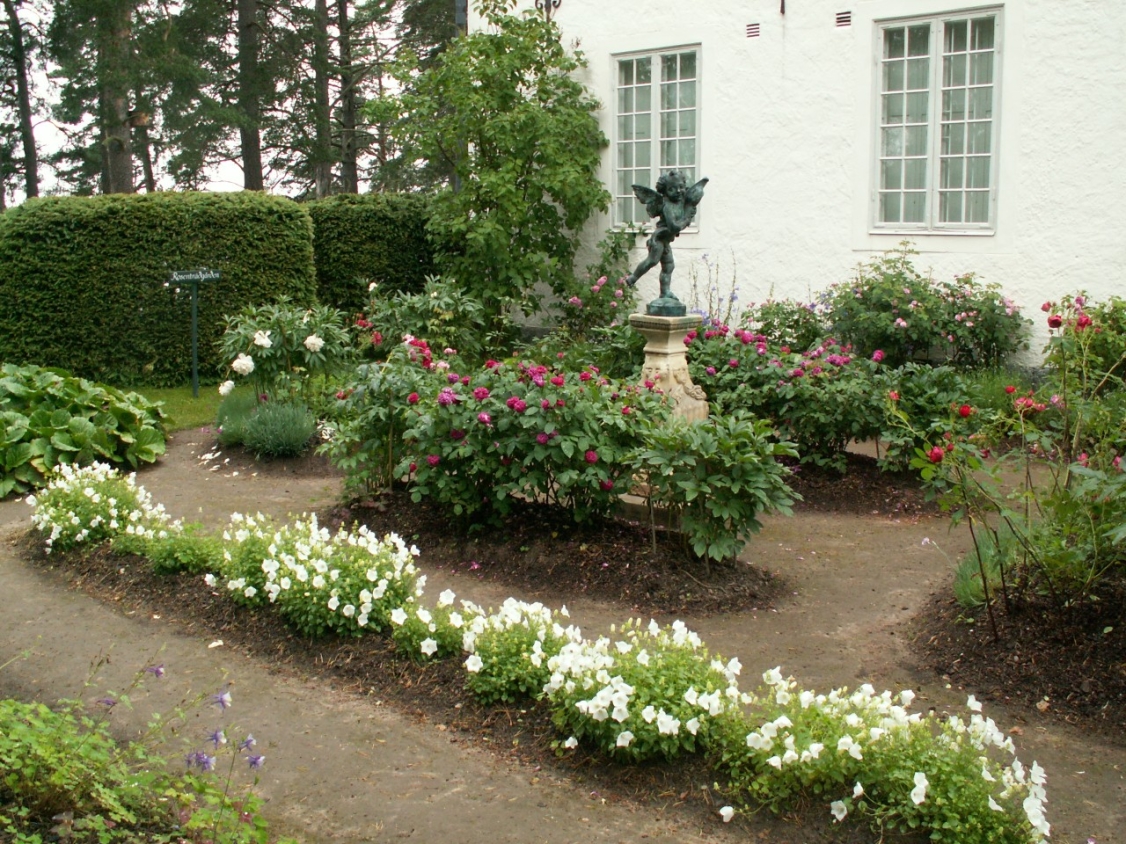
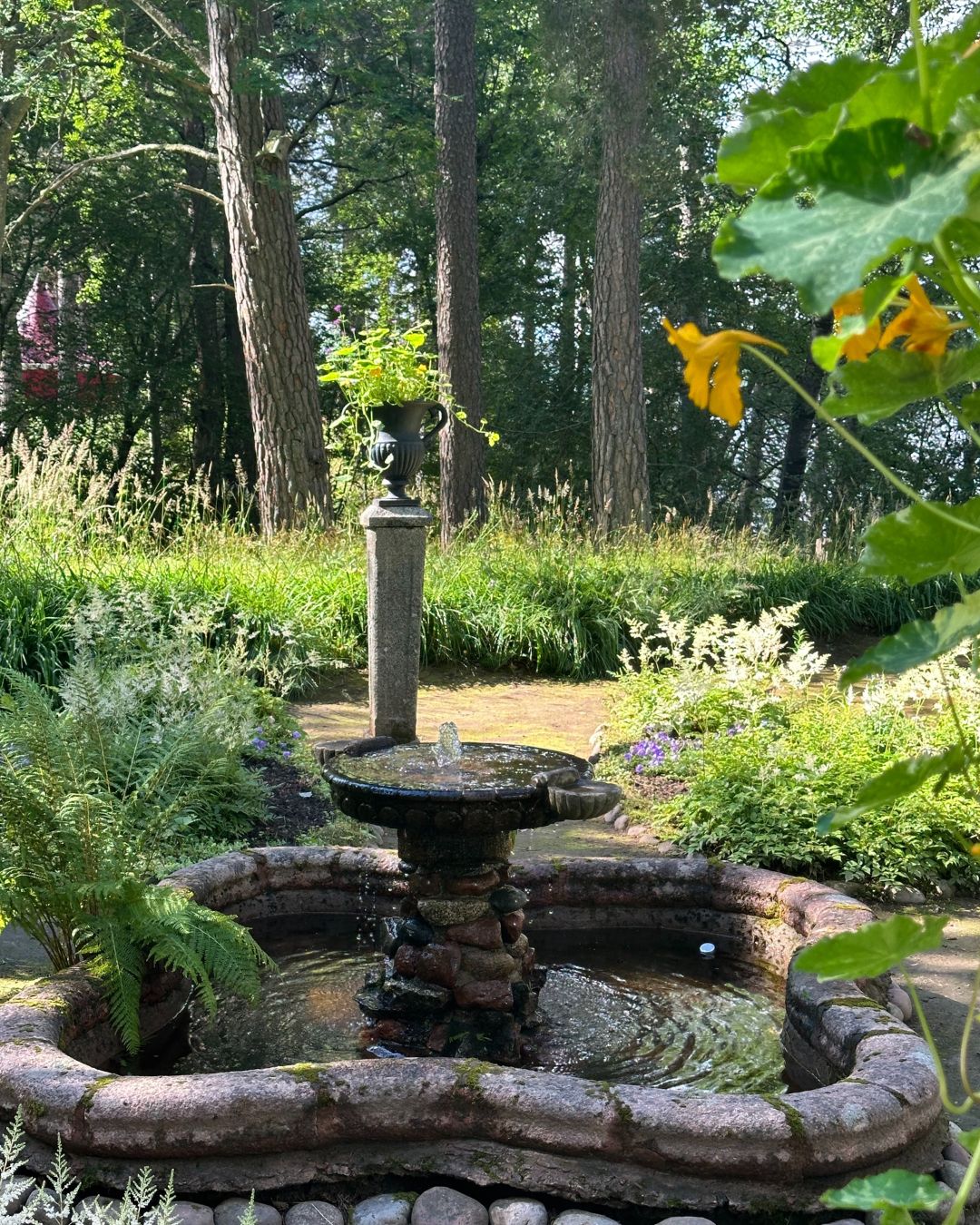
The fountain garden
The fountain garden is the first garden room, located some distance from the house on the north-facing slope. A winding path through the ravine takes you there.
The garden was created before the royal couple's (Gustav V and Viktoria) visit to Leksand in 1924 and was inaugurated by the Queen.
The colours here are predominantly white and blue, the water ripples in the fountain and the sunlight filters through the foliage of the trees, making the garden a cooling oasis on hot summer days
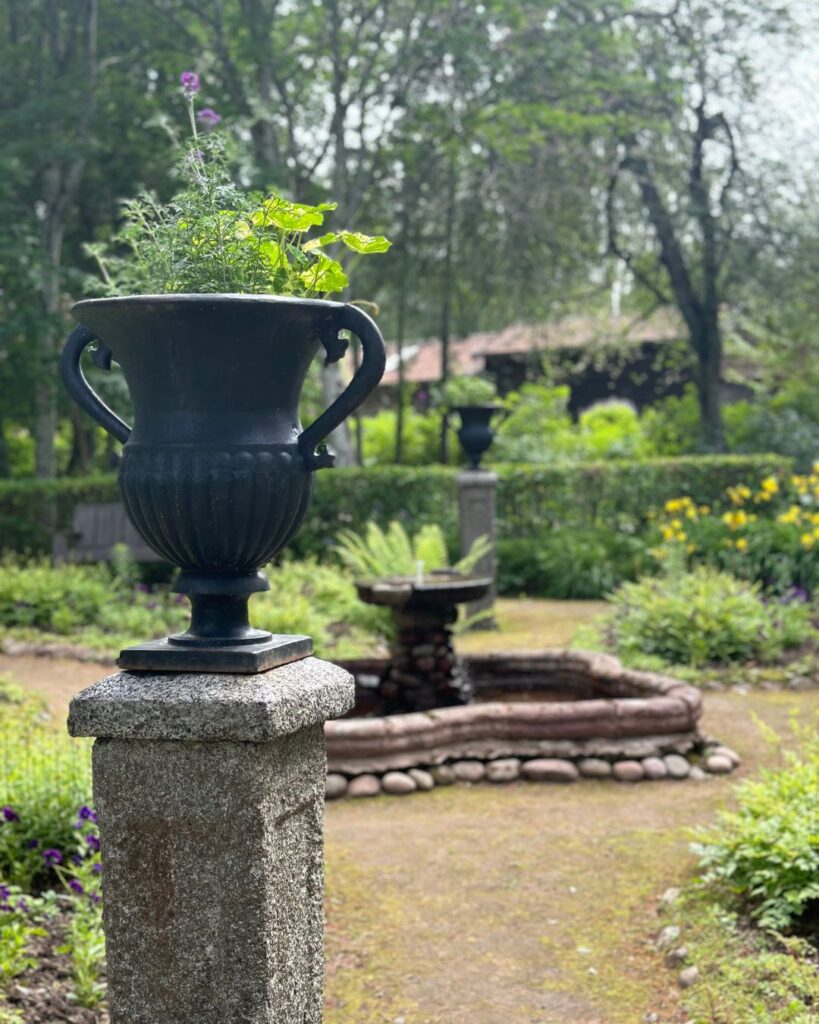
Eco-temple
Eco-temple stands on the small knoll, immediately north of the Fountain Garden, which is most exposed to erosion. Weather, wind and humpback swallows have dug out the slope together.
Some old strong pine trees However, its roots still grip the remaining sandy soil and prevent the hill from falling into the lake.
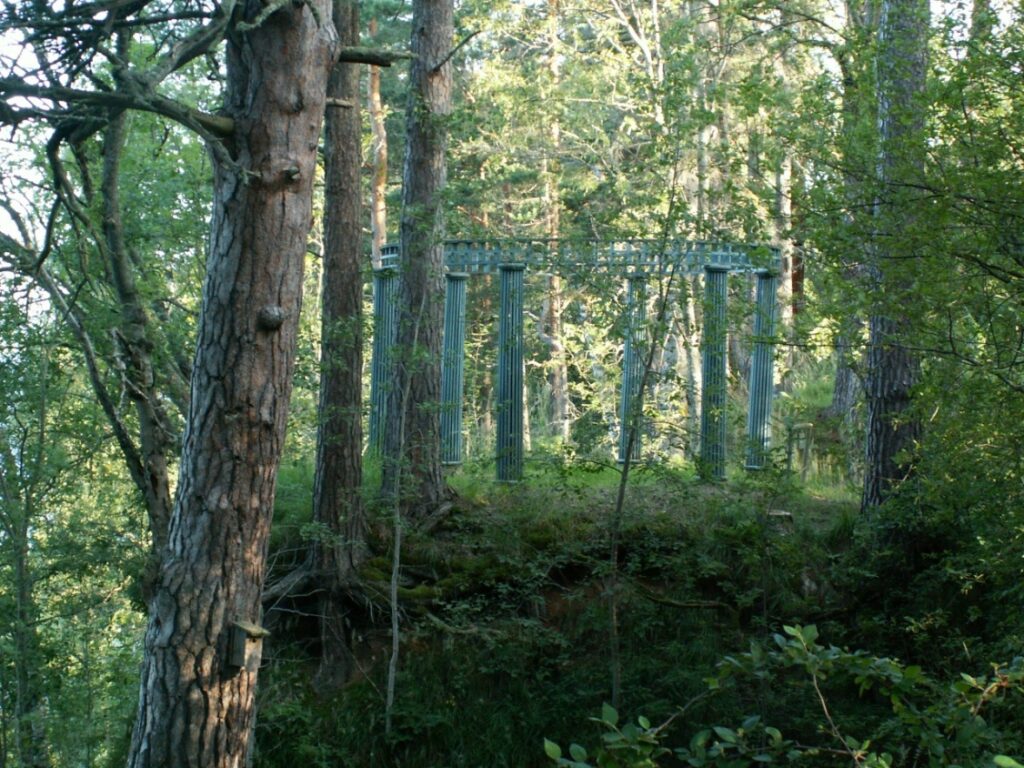
The fountain garden
The cobbled Brunnsträdgården with its small plantings of simple white water lilies and yellow-leaved carpet roses, is the last garden to the north. Just beyond this, the Hildasholm area ends.
Around the garden there are simple seats made of split logs under hopscotched arches.
Ottilia Adelborga good friend of the Munthe family, writes in his diary on 23 August 1930:
"Beautiful evening up at the well with sunset behind the pines. Pantomime with whistling of Grane and quiet gramophone music..."
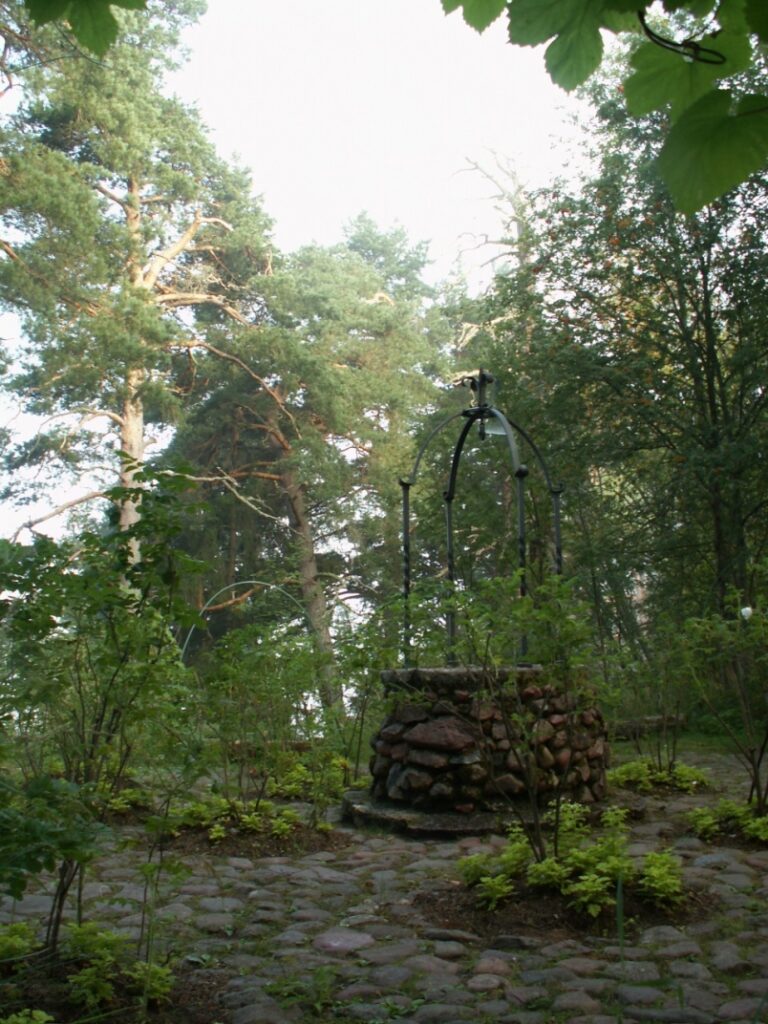
The medicinal garden
The medicinal garden is a new addition among the gardens of Hildasholm. It was laid out in 2004 behind the manor house and reception wing, where there was previously only an empty grassy area.
This is the garden of the pharmacist son Axel Munthe, created for his professional activities as a doctor.
Within the surrounding hedge of apothecary roses grow some sixty different herbs that have been used for medicinal purposes throughout the ages.
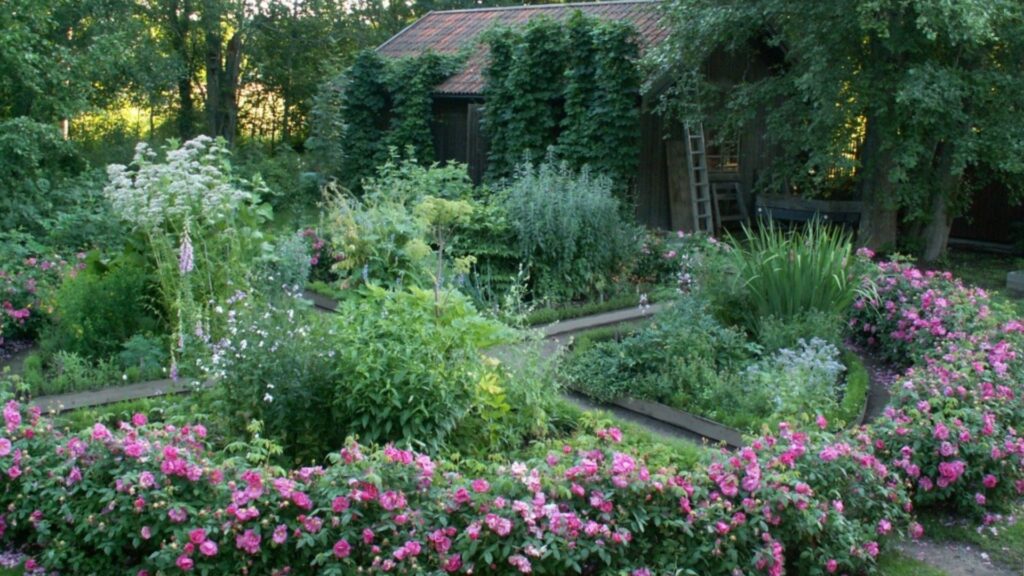
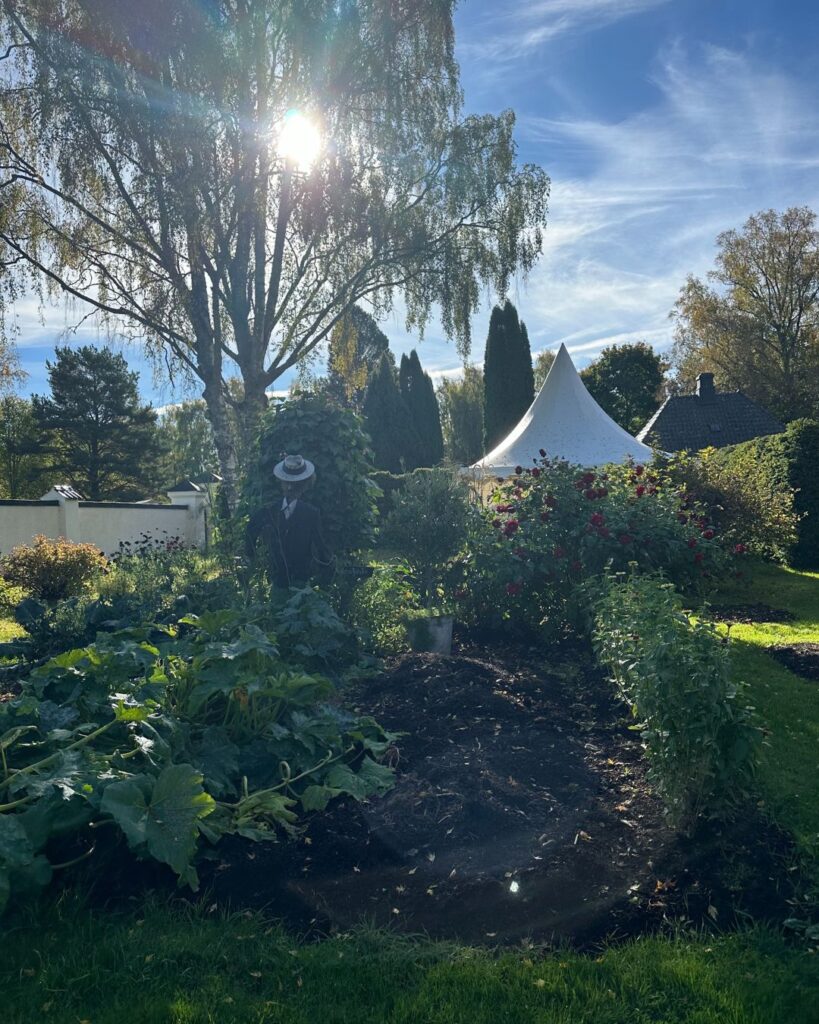
The kitchen garden
Between the wall and the north wing building In 2004, the small kitchen garden was revived - in the same place where the Munthe family used to have their kitchen garden.
The cultivation beds are deeply dug by hand and fertilised with straw-mixed cow dung collected from a local farm.
Together with the vegetables also grows cut flowers that are picked and used in the vases inside the big house.
